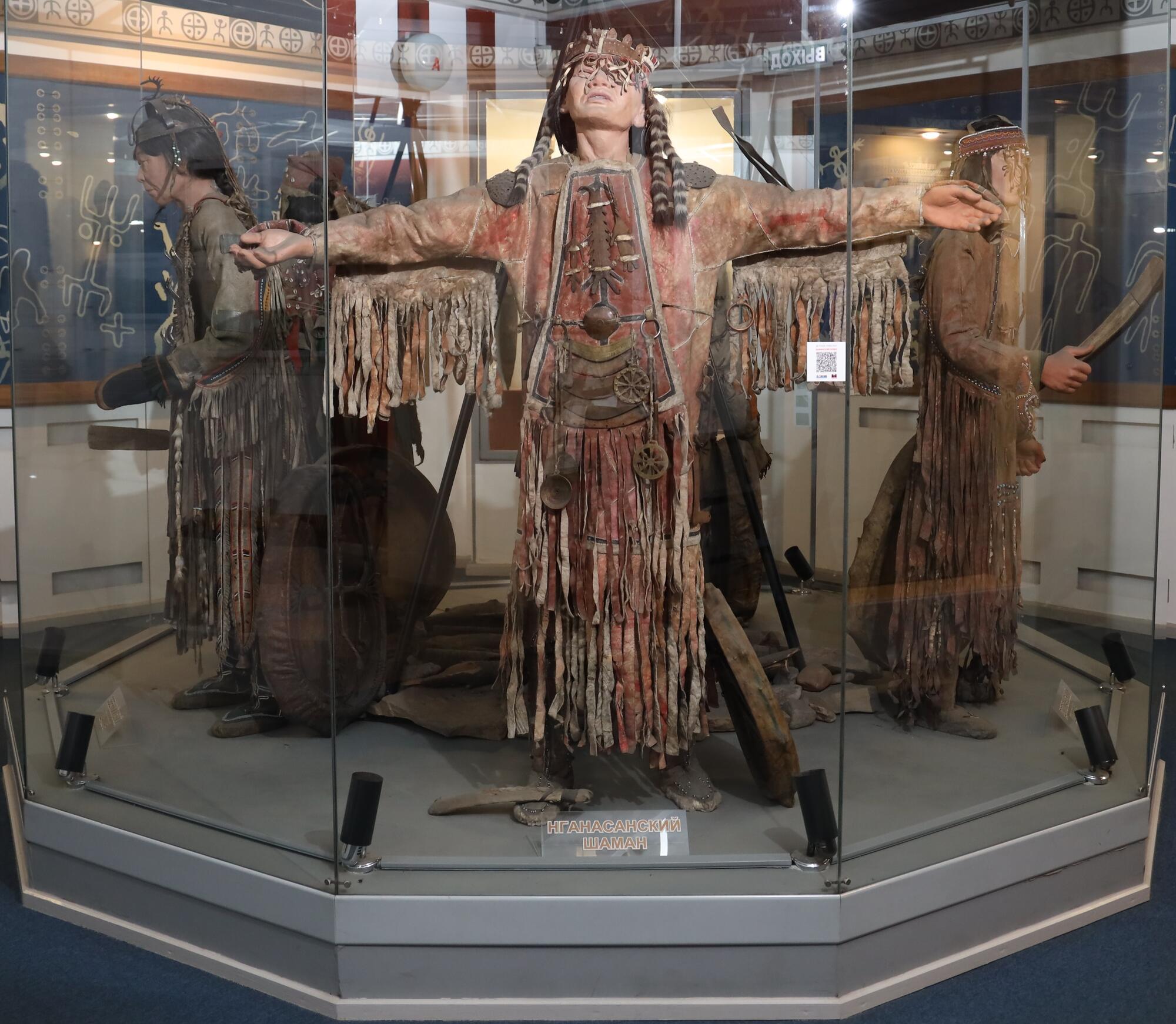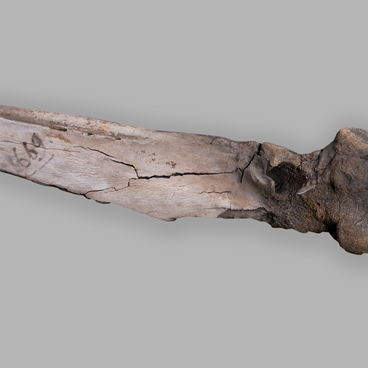Evenks are one of the most numerous indigenous peoples of Krasnoyarsk Krai. They belong to the Tungusic peoples, their main occupations are hunting, reindeer herding and fishing. By the end of the 19th century, the indigenous peoples of Siberia were officially considered baptized, but all of them retained their traditional beliefs and faith in the magical power of shaman and spirits.
Shamanism is one of the oldest forms of religious practice, a belief in the possibility of communicating with spirits through ritual actions. The mediator between the worlds of people and spirits is a special person called a shaman. It was believed that the spirits endow shamans with supernatural powers, which gives them the ability to bring luck to any venture, predict the future, find the lost, heal the sick.
To interact with the other world, the shaman communicates with the spirits during a special ritual — kamlanie. He hit the tambourine with a wooden mallet covered with animal skin. The ritual tambourine was made not by the shaman himself, but by his relatives. Women dressed the skin, stretched it and sewed it on a wooden frame, decorated it with pendants and beads.
Men carved and bent the board for the frame, forged iron pendants, and painted the tambourine with traditional patterns. The painting reflected the people’s idea of the structure of the universe: the flat Earth, bordered by mountains, was depicted under the dome sky.
Each shaman had his own patron spirit, which appeared in the form of an animal or a bird. The image of this patron spirit was always reflected in the shamanic costume. In the 17th — early 20th centuries, the full set of shaman attributes consisted of a caftan, an apron, a headdress, mittens, shoes, a tambourine, a mallet and sometimes a special rod. Each item of the shaman’s clothing was decorated with fringes, cords, metal pendants in the shape of animals, birds or human characters.
The shaman’s costume was supplemented with
attributes as his power grew. The costume of the Evenki shaman was most often
sewn from the skins of wild reindeer, less often from those of bears and moose.
The shaman received the apron a few years after the tambourine. The Krasnoyarsk
Museum displays an Evenki shaman’s apron decorated with pendants with the image
of a loon, replicated on the tambourine.



